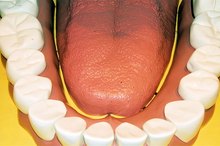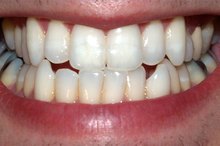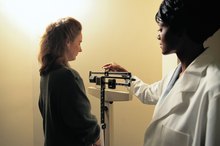Amoxicillin for Tooth Pain
Teeth are exposed to bacteria, chemicals and grinding and biting force on a daily basis. Under these circumstances, it's little wonder that people end up with toothaches. Some toothaches require heavy-duty care such as a root canal, but some can be treated simply with a prescription drug known as amoxicillin.
What Is Amoxicillin?
Amoxicillin is an antibiotic prescription medication. Because amoxicillin is derived from penicillin, an antibiotic most people can take, amoxicillin is prescribed for a wide variety of bacterial illnesses. It is one of the most commonly prescribed medications in use for toothache pain that is bacterial in origin.
How It Works
Antibiotics for an Infected Tooth
Learn More
When teeth are not cleaned properly through brushing, flossing and using mouthwash, particles of food get stuck in the crevices in and around the teeth. Bacteria that are present in the mouth then feed on these food particles. Over time, the bacteria can cause inflammation of the gums or damage the tissue inside of the teeth. The result often is a toothache. Amoxicillin kills the bacteria that cause the inflammation and damage, thereby getting rid of the source of the toothache.
- When teeth are not cleaned properly through brushing, flossing and using mouthwash, particles of food get stuck in the crevices in and around the teeth.
- Amoxicillin kills the bacteria that cause the inflammation and damage, thereby getting rid of the source of the toothache.
Dosage
Most dentists give toothache patients an amoxicillin dose of 500 mg and instruct the patient to take two or three doses per day, depending on the infection severity, height and weight of the patient, and other biological factors such as other recent illnesses. Patients typically are instructed to take the medication for about a week. Doses shouldn't be "caught up" if one is missed, and the entire prescription has to be finished even if the pain goes away in order to prevent any remaining bacteria from becoming resistant.
Side Effects
Amoxicillin Antibiotic Side Effects
Learn More
Like any other drug, amoxicillin has side effects. These generally are mild and include symptoms such as upset stomach. In some cases, more severe side effects may occur, such as skin rash, bleeding or seizures. Notify your doctor immediately if you have any of these symptoms. If needed, the doctor can lower your medication dose or switch you to one to which you do not react so negatively.
- Like any other drug, amoxicillin has side effects.
- If needed, the doctor can lower your medication dose or switch you to one to which you do not react so negatively.
Considerations
Although amoxicillin is commonly prescribed for toothache pain, there are many instances when amoxicillin would do no good. Examples include oral surgery or dental trauma. This is because amoxicillin is intended to fight infection rather than to reduce inflammation or relieve pain. Any pain relief that results from taking the medication occurs because the amoxicillin is getting rid of bacteria, not because the medication itself is a pain reliever or anti-inflammatory drug.
- Although amoxicillin is commonly prescribed for toothache pain, there are many instances when amoxicillin would do no good.
- This is because amoxicillin is intended to fight infection rather than to reduce inflammation or relieve pain.
Related Articles
References
- Soukavong M, Kim J, Park K, et al. Signal Detection of Adverse Drug Reaction of Amoxicillin Using the Korea Adverse Event Reporting System Database. J Korean Med Sci. 2016;31(9):1355-61. doi:10.3346/jkms.2016.31.9.1355
- Stein GE, Gurwith MJ. Amoxicillin-potassium clavulanate, a beta-lactamase-resistant antibiotic combination. Clin Pharm. 1984;3(6):591-9.
- Thomas VM, Thomas-eapen N. An Uncommon Side Effect of a Commonly Used Antibiotic: Amoxicillin-Clavulanic Acid Induced Hepatitis. Korean J Fam Med. 2017;38(5):307-310. doi:10.4082/kjfm.2017.38.5.307
- Millard G. Further experience with augmentin in the treatment of skin infections. Scott Med J. 1982;27 Spec No.:S35-8. doi:10.1177/00369330820270S108
- Blaser M. Antibiotic overuse: Stop the killing of beneficial bacteria. Nature. 2011;476(7361):393-4. doi:10.1038/476393a
- Zaman SB, Hussain MA, Nye R, Mehta V, Mamun KT, Hossain N. A Review on Antibiotic Resistance: Alarm Bells are Ringing. Cureus. 2017;9(6):e1403. doi:10.7759/cureus.1403
- Amoxil, Moxatag (amoxicillin) dosing, indications, interactions, adverse effects, and more.
- Augmentin, Augmentin XR (amoxicillin/clavulanate) dosing, indications, interactions, adverse effects, and more.
Writer Bio
Wanda Thibodeaux is a freelance writer and editor based in Eagan, Minn. She has been published in both print and Web publications and has written on everything from fly fishing to parenting. She currently works through her business website, Takingdictation.com, which functions globally and welcomes new clients.









